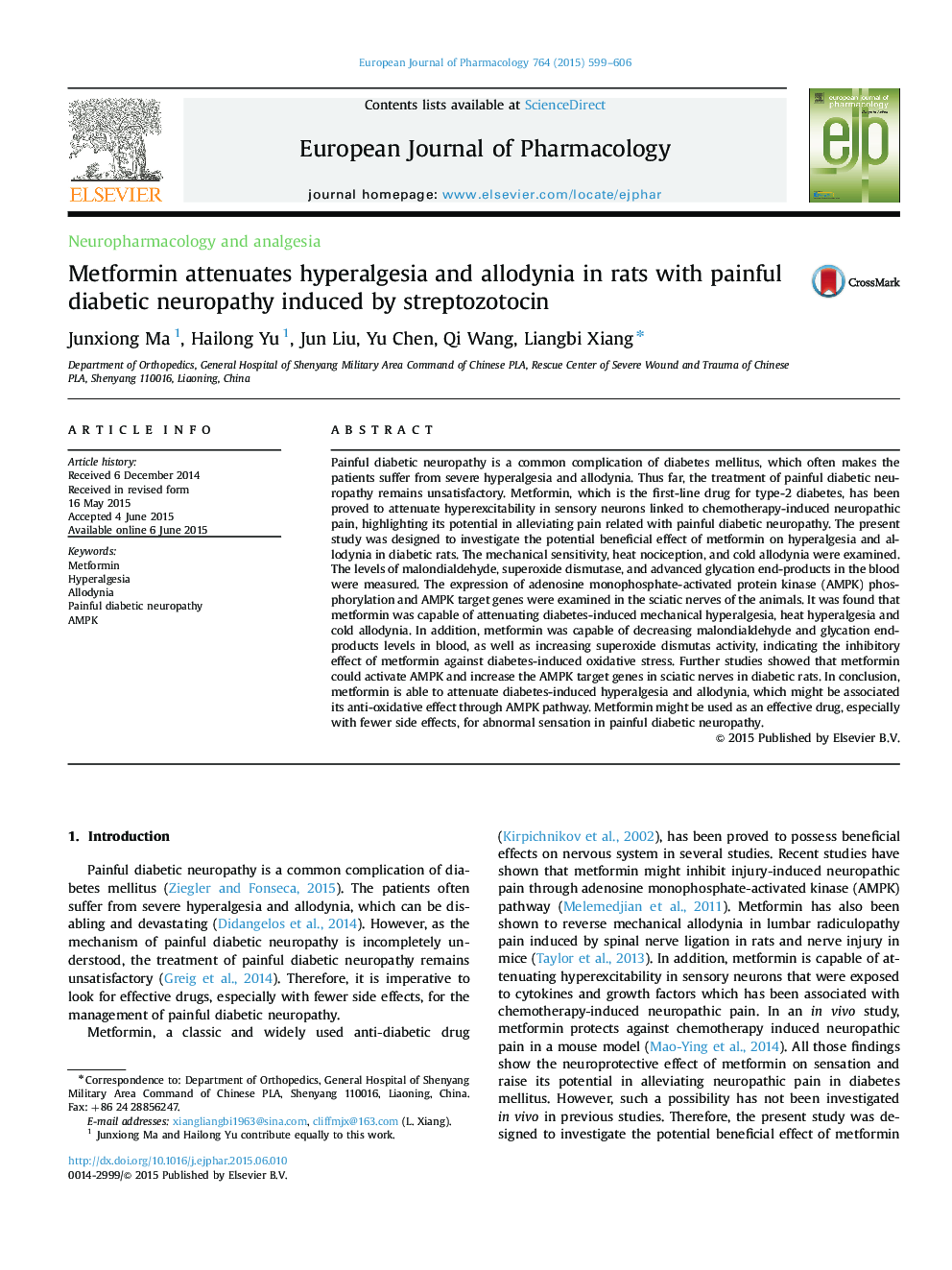| Article ID | Journal | Published Year | Pages | File Type |
|---|---|---|---|---|
| 2531348 | European Journal of Pharmacology | 2015 | 8 Pages |
Painful diabetic neuropathy is a common complication of diabetes mellitus, which often makes the patients suffer from severe hyperalgesia and allodynia. Thus far, the treatment of painful diabetic neuropathy remains unsatisfactory. Metformin, which is the first-line drug for type-2 diabetes, has been proved to attenuate hyperexcitability in sensory neurons linked to chemotherapy-induced neuropathic pain, highlighting its potential in alleviating pain related with painful diabetic neuropathy. The present study was designed to investigate the potential beneficial effect of metformin on hyperalgesia and allodynia in diabetic rats. The mechanical sensitivity, heat nociception, and cold allodynia were examined. The levels of malondialdehyde, superoxide dismutase, and advanced glycation end-products in the blood were measured. The expression of adenosine monophosphate-activated protein kinase (AMPK) phosphorylation and AMPK target genes were examined in the sciatic nerves of the animals. It was found that metformin was capable of attenuating diabetes-induced mechanical hyperalgesia, heat hyperalgesia and cold allodynia. In addition, metformin was capable of decreasing malondialdehyde and glycation end-products levels in blood, as well as increasing superoxide dismutas activity, indicating the inhibitory effect of metformin against diabetes-induced oxidative stress. Further studies showed that metformin could activate AMPK and increase the AMPK target genes in sciatic nerves in diabetic rats. In conclusion, metformin is able to attenuate diabetes-induced hyperalgesia and allodynia, which might be associated its anti-oxidative effect through AMPK pathway. Metformin might be used as an effective drug, especially with fewer side effects, for abnormal sensation in painful diabetic neuropathy.
